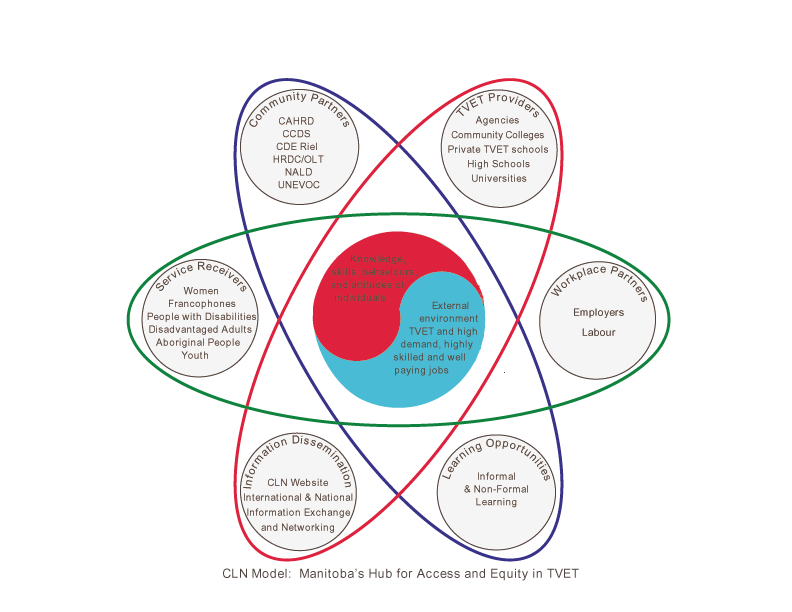
Objectives and Scope
The goal of UNEVOC-Canadaís pilot CLN is to implement a smart network dedicated to meeting the information and training needs of selected disadvantaged groups in the area of TVET. This network will focus on products and services of critical importance to service providers, service recipients and workplace partners. The overall goal will be met through strategic partnerships with key community groups to accomplish the following objectives:
This CLN initiative is consistent with OLT objectives as it:
Figure 1 shows
the conceptual model of the proposed CLN for Access and Equity in TVET.
The scope of this model is to address barriers related to the participation
and success of women, Aboriginal people, francophones, people with disabilities,
youth and other disadvantaged adults in TVET and in non-traditional occupations.
The model will address four classes of barriers including: Situational
(life circumstances), Institutional (workplace or school related),
Dispositional
(related to a personís low level of confidence or fear) and Informational
barriers. This CLN is seen as a bridge to overcoming these barriers so
target groups can gain access to formal TVET and, ultimately, obtain high
skilled, well-paying jobs that are in great demand. It is anticipated that
the CLN will foster a culture of lifelong learning in support of access
and equity in Canadian society. Figure 1 also shows the harmony between
target groupsí knowledge, skills, behaviours and attitudes and the external
environment, where better paying, highly skilled employment is available.
The removal of barriers in TVET and the workplace will facilitate access
and equity in non-traditional occupations.
